The purpose of the unit standard requires learners to follow a process in writing texts and reports required in business.
The purpose of the unit standard requires learners to follow a process in writing texts and reports required in business. It is intended to promote clear, unambiguous communication in plain language and to improve the quality of written reports and other texts that are specific to a business environment, require a particular format and may include specified legislated requirements. The unit standard enables learners to recognise and effectively use textual conventions and features specific to business texts.
Course Content
- Texts specific to a particular function in a business environment are identified and an indication is given of industry-specific and/or legislative requirements for each text
- Texts specific to a particular function in a business environment are produced in response to defined requirements
- The implications of not following the industry-specific or legislative requirements for a specific type of text are explained and an indication is given of the possible consequences of non-compliance
- Terminology and conventions specific to a particular function in a business environment are used appropriately
- The intended or incidental audience for whom the text is to be written are identified for a specific field or subfield to focus the information needs
- The purpose of the text is identified within a specific field or subfield and according to the information
- Questions are asked to help understand client needs and to focus on information gathering
- Information required for the document is accessed from a variety of sources
- Information accessed is checked for accuracy, bias, stereotypes, and other offensive details
- The focus of the proposed text is defined, and a decision is made about what information should be included or omitted to ensure the focus
- A checklist is created to facilitate reflection and editing
- A format and structure are selected for the text that is appropriate for the intended audience and function
- The main points to be included in the text are identified, and the necessary supporting details are added
- A first draft of the text is written that collates the necessary information in a rough framework
- The first draft is checked to ensure that appropriate grammar has been used and where necessary the draft is rewritten in plain language using clear accessible language that avoids over-complex syntax
- Different ways of presenting the same information are considered and used where these enhance the meaning of the text
- Technical or marketing terms and jargon are interpreted and rephrased in plain language or used appropriately in the correct context where the terminology is essential to the understanding of the text
- All information is checked for accuracy and factual correctness
- The document is ordered to ensure that the sequence is logical and meaningful
- A text type, format, and layout are selected that is appropriate for the audience and purpose
- Layout and formatting techniques are used correctly to enhance the readability of the text
- Information in the document is evaluated in terms of its appropriateness for the intended audience and business function
- The final draft is proofread to check that it is completely correct
- The final copy is self-assessed using a rubric or checklist based on the requirements of the writing task and the items on the checklist created to Identify and collect information needed to write a text specific to a particular function
- Non-accredited: Short course only
- Duration: 2h 50m
- Delivery: Classroom/Online/Blended
- Access Period: 12 Months


